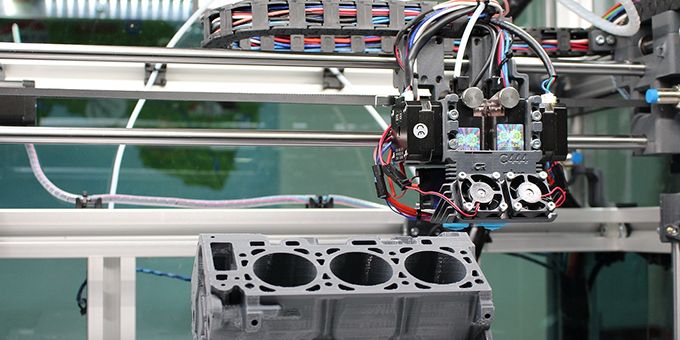Can 3D printing be used in the manufacture of safety critical vehicle parts?
 Moving Beyond Prototypes
Moving Beyond Prototypes

Contributed by | Pailton Engineering
In the United States, an epic backyard project will see the creation of a life-size, functional Lamborghini Aventador. The car is not entirely 3D printed, but rather demonstrates the impressive potential of 3D printing for the wider vehicle industry. Here, Kostas Poulios, Principal Design and Development Engineer at Pailton Engineering, explains how 3D printing is used in large vehicle manufacturing and whether this method could play a role in the production of safety critical parts.
Outside of novelty projects, like the Lamborghini example, 3D printing is already an important part of vehicle production. From tooling, parts manufacture, design and prototyping components, the industry is widely considered a pioneer of integrating 3D printing into processes. However, the same cannot be said for the production of safety critical vehicle parts.
Consider the steering system as an example. Steering systems are put through intense conditions throughout their lifespan, particularly when used in large vehicles like military, utility and HGVs. Each part of the system, including the drag link assemblies, steering and suspension ball joints, and bevel boxes must be able to withstand heavy shock loads. In an ideal world, these systems should also be designed to last.
Due to high shock loads, components for steering systems cannot currently be manufactured with some of the common materials used for 3D printing — at least, not to a useable standard. For instance, Acrylonitrile Butadiene Styrene (ABS), a thermoplastic filament which is regularly used for Fused Deposition Modelling (FDM), does not provide adequate properties for the manufacture of steering system parts.
The material provides good levels of strength and is lightweight but is simply not strong or durable enough to be used in a steering application. Instead, ABS modelled parts are only suitable for rapid prototyping.
An alternative material would be the option of Metal Matrix Composites (MMC), a composite with at least two constituent materials. When three or more materials are combined, this is known as a hybrid composite. This option provides much higher levels of strength, as several elements can be combined to improve the materials properties and ensure the part meets its requirements.
For niche steering systems, such as those used in HGVs, construction and military vehicles, MMC can provide designers with an opportunity to expertly engineer the metal their part will be made from, while also reaping the advantages of 3D printing. This includes the potential to topologically optimise parts to maximise their strength-to-weight ratio. This is particularly advantageous when used in combination with other design tools, such as Finite Element Analysis (FEA).
MMC printing could be used to manufacture safety critical parts, like the ones used in a steering system. However, MMCs require the use of Selective Laser Sintering (SLS), the process required to print components from metal powder. Currently, this method can be costly and time consuming for manufacturers to implement, deeming it unsuitable for large production volumes. Looking into the future, when SLS 3D printers become widely available and more cost effective to use, this may change.
As in every optimised steering system, whether that be an entire unit or individual components, any work outside the conventional manufacturing processes will be more expensive. An exception to this rule would be very low production volumes. However, these cases are usually undertaken with the intention of larger volume production in the future.
When considering whether to implement 3D printing into parts production, manufacturers must understand that the advantages of that process might not outweigh the initial cost. This is certainly the current case for 3D printing for safety critical parts. However, the method is valuable in other areas of production.
3D printing is successfully used in the design phase of safety critical components. For example, Pailton Engineering uses a HP DesignJet to create prototype steering system components from ABS, including ball pins, drop arms, steering wheels, suspension joints and forgings. In these cases, the 3D printed part is not used for production, but is replaced with a production equivalent once the design is finalised.
3D printing is certainly present in vehicle manufacturing. However, it is not necessarily suitable for production of safety critical parts. Instead, Original Equipment Manufacturers (OEMs) should prioritise using safety critical part suppliers, like manufacturers of steering systems, that use the benefits of 3D printing for prototyping and testing.
At Pailton Engineering, this process provides our highly skilled design and production engineers with a visual representation of steering parts and assemblies. This helps us to identify issues and improvements before production begins to provide customers with a right first-time solution, every time.
About Pailton Engineering
Pailton Engineering Ltd design, test and deliver world class steering systems, using state of the art CAD (Solid Works), purpose designed and built test facilities, and state of the art manufacturing capability.
The content & opinions in this article are the author’s and do not necessarily represent the views of ManufacturingTomorrow
Comments (0)
This post does not have any comments. Be the first to leave a comment below.
Featured Product

